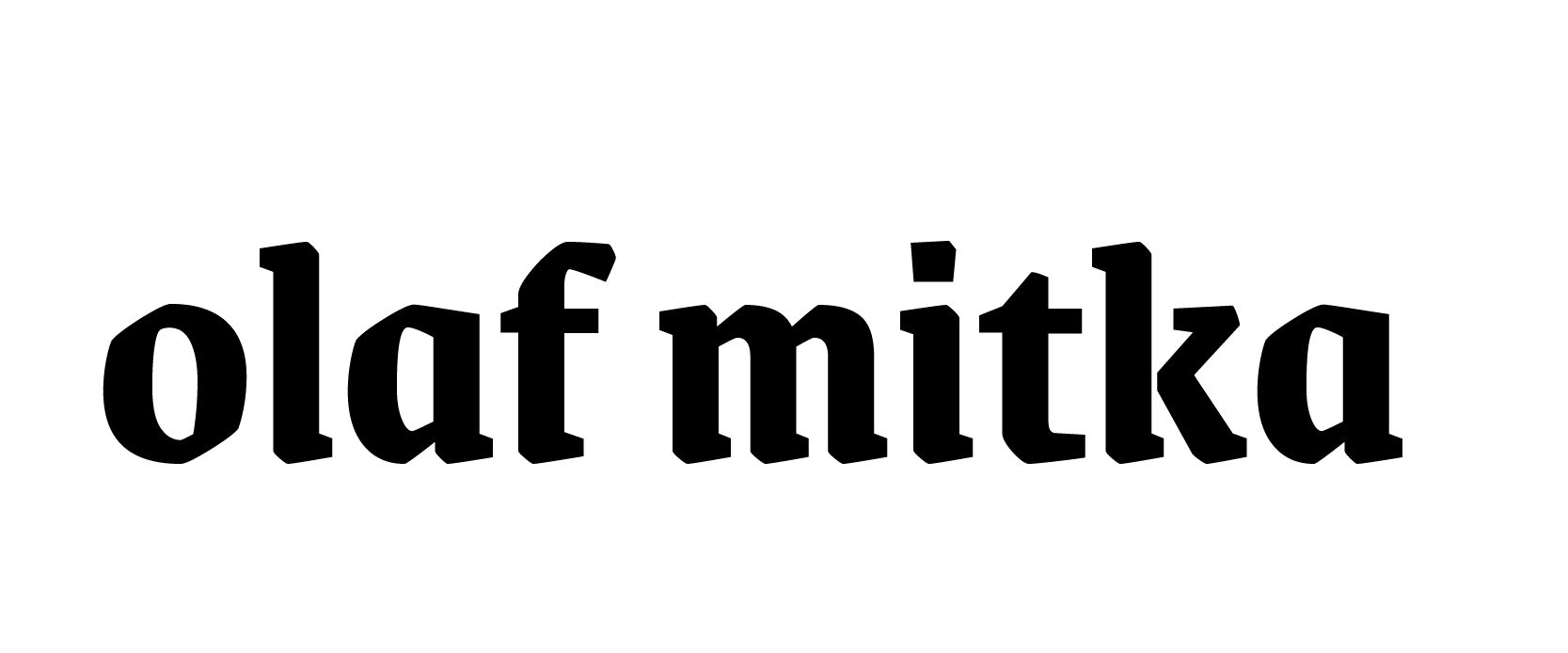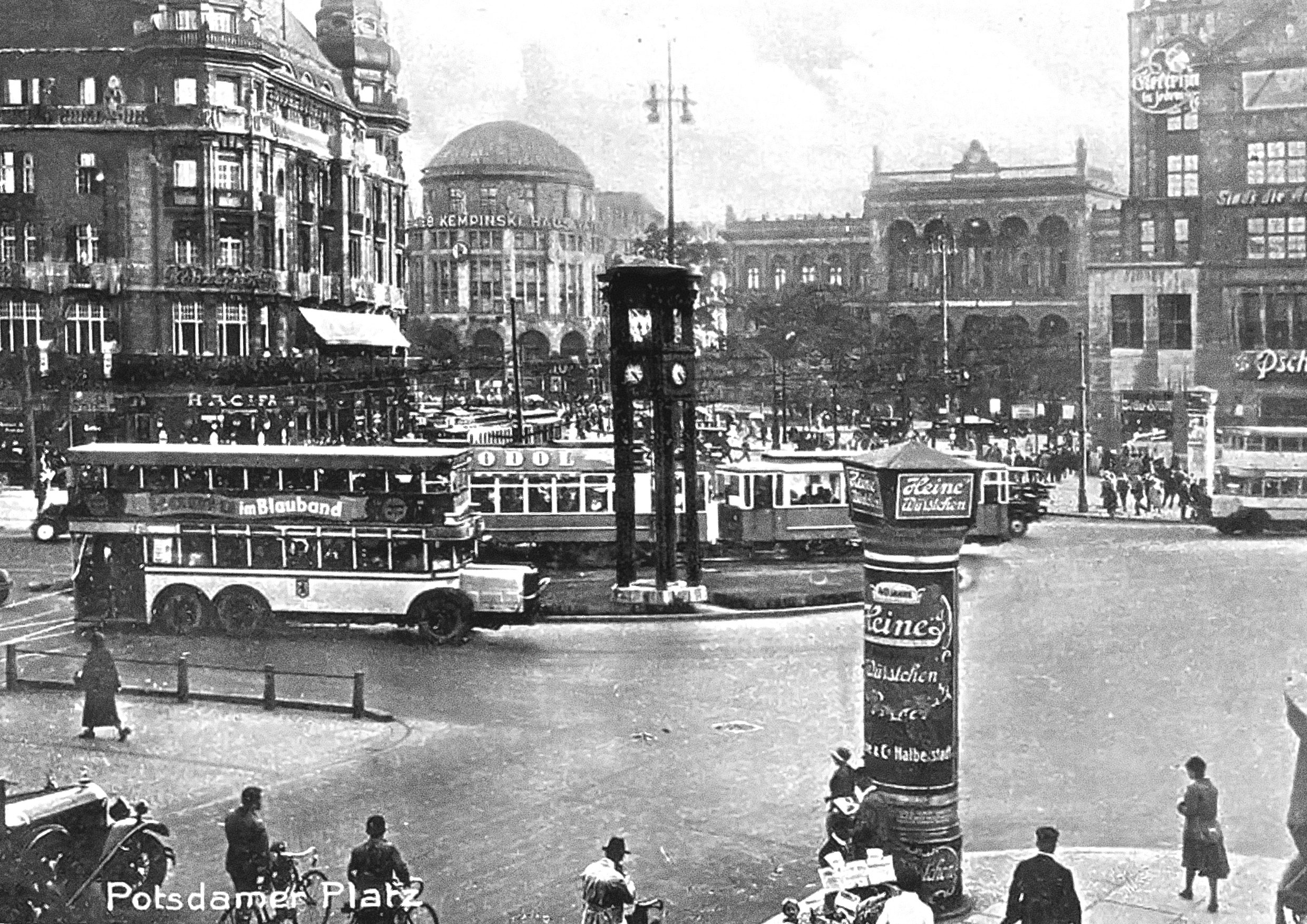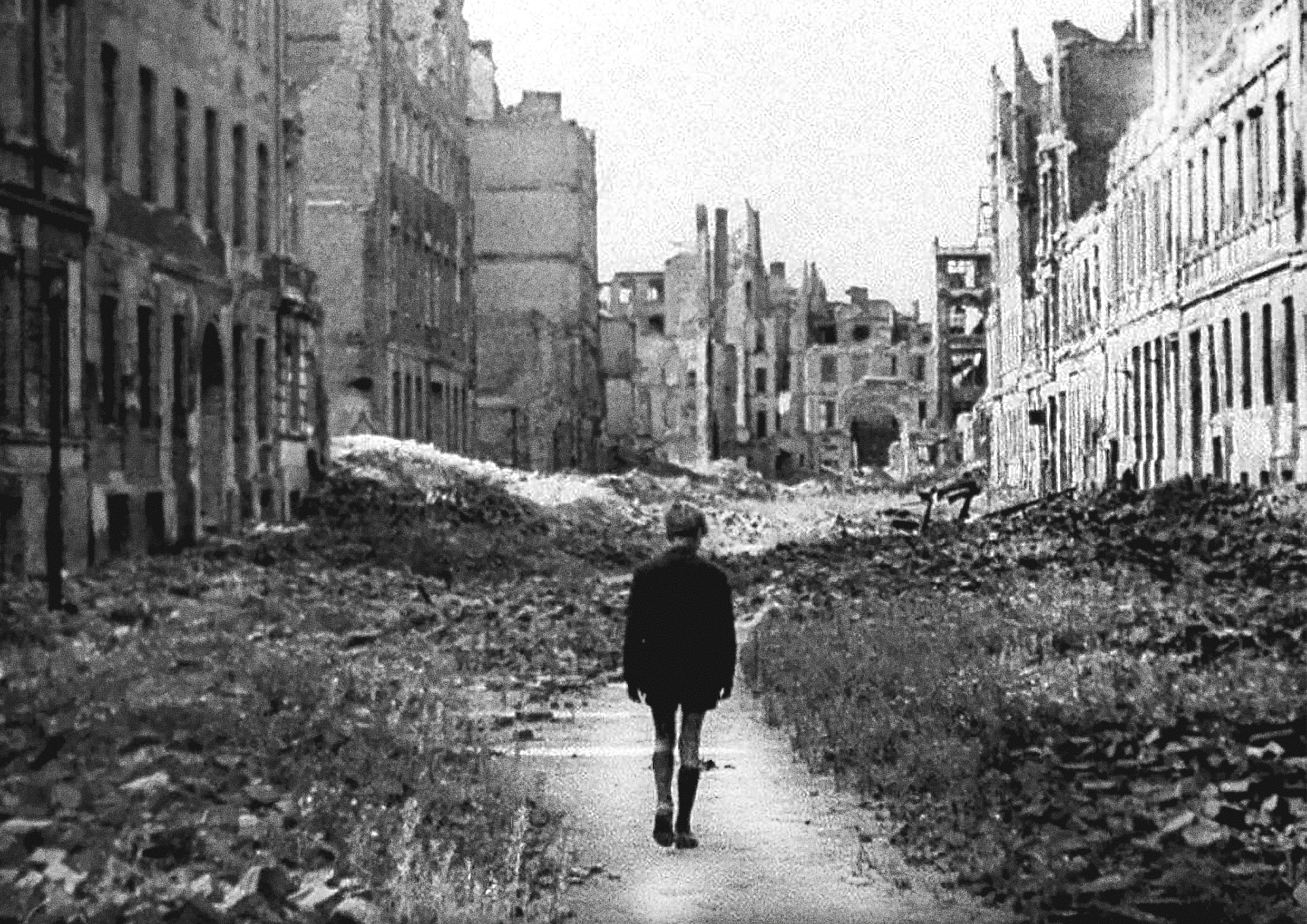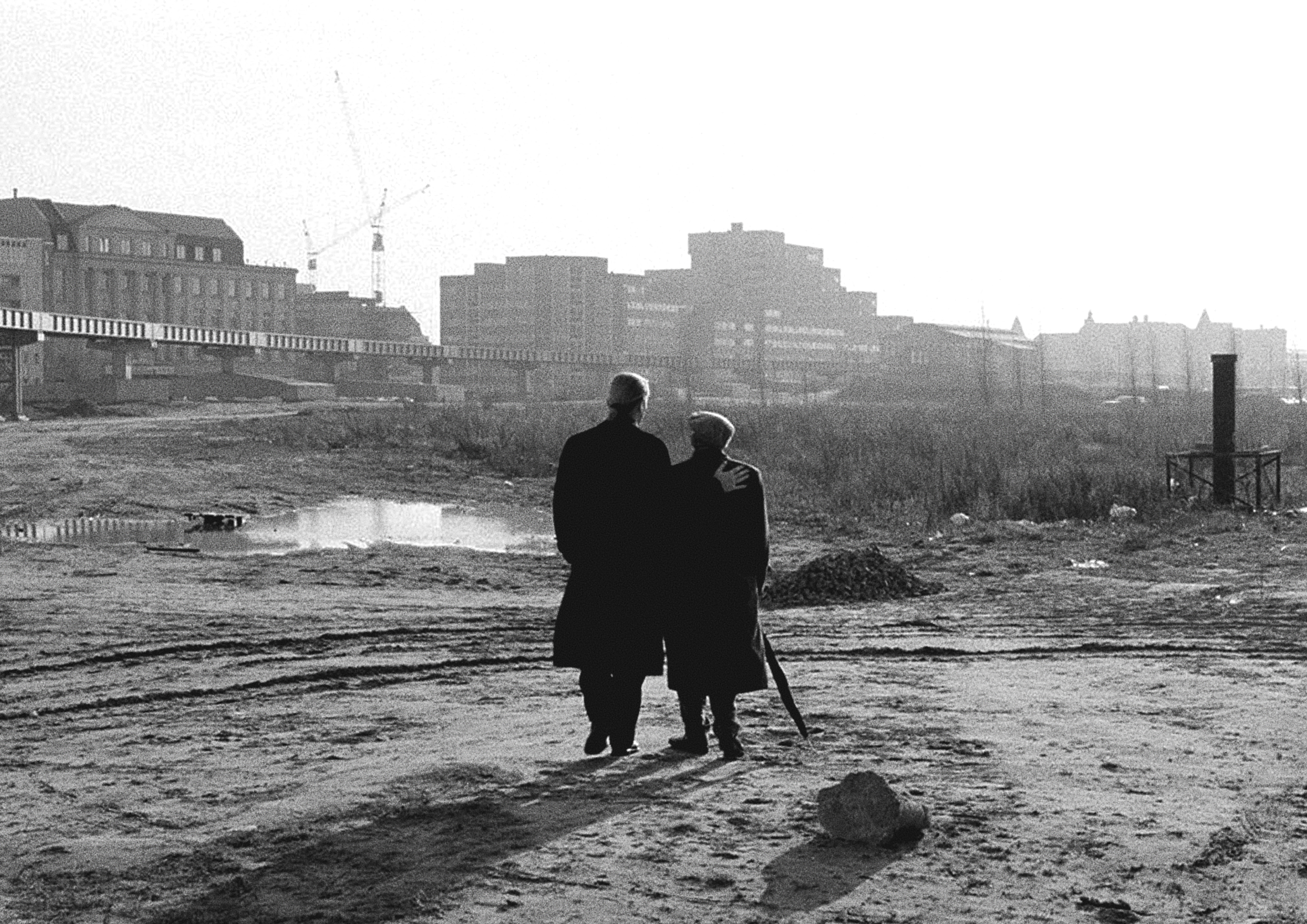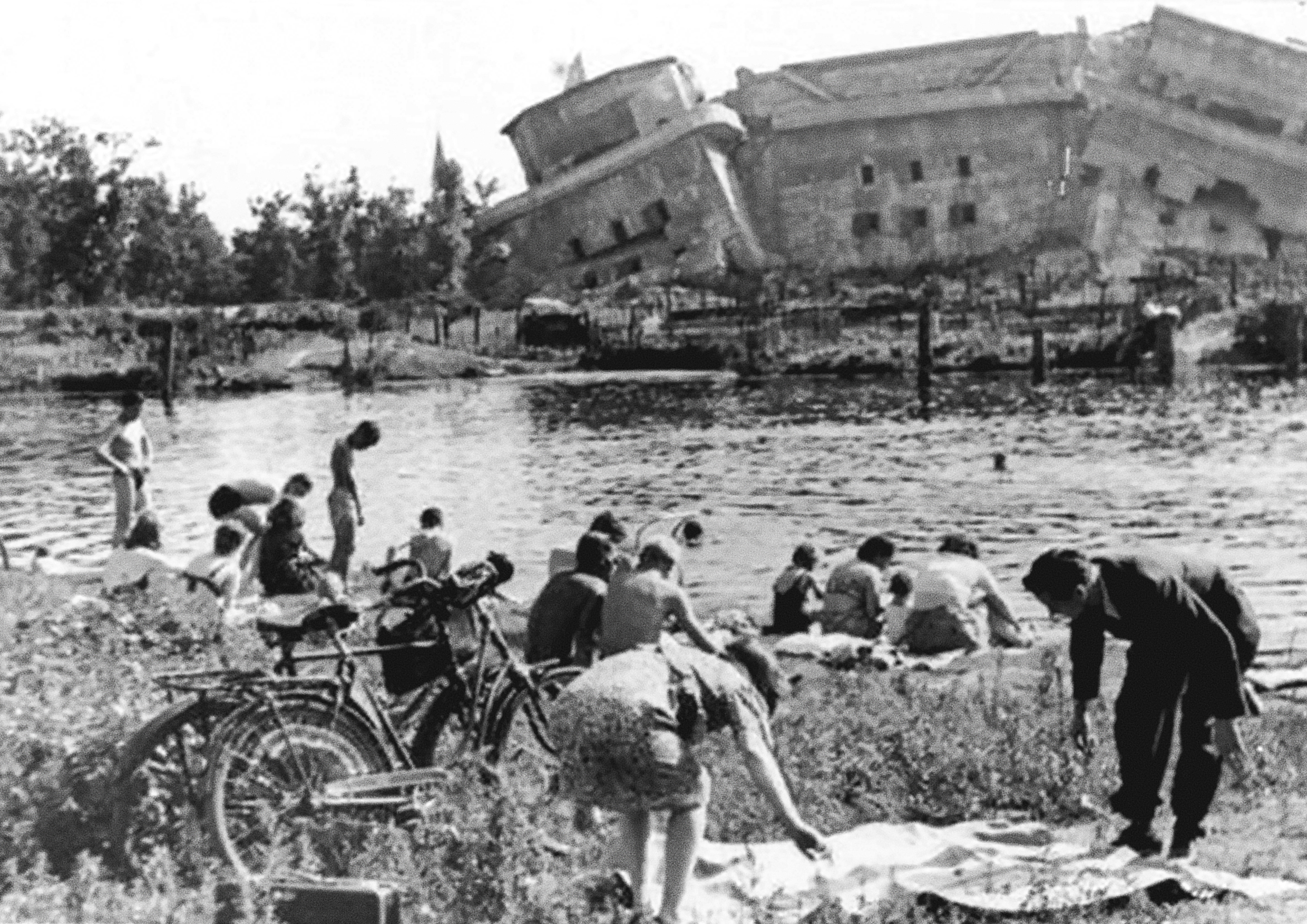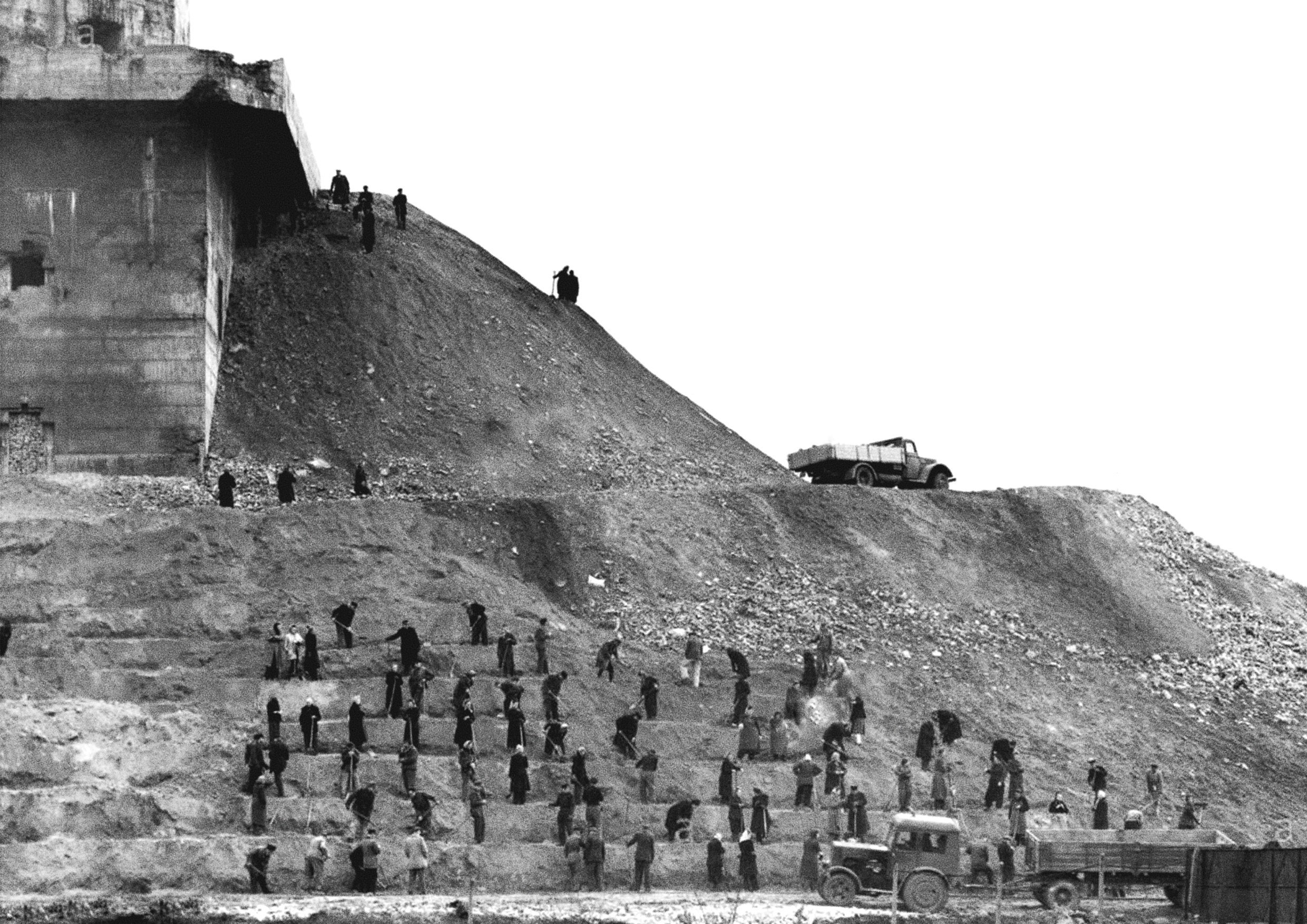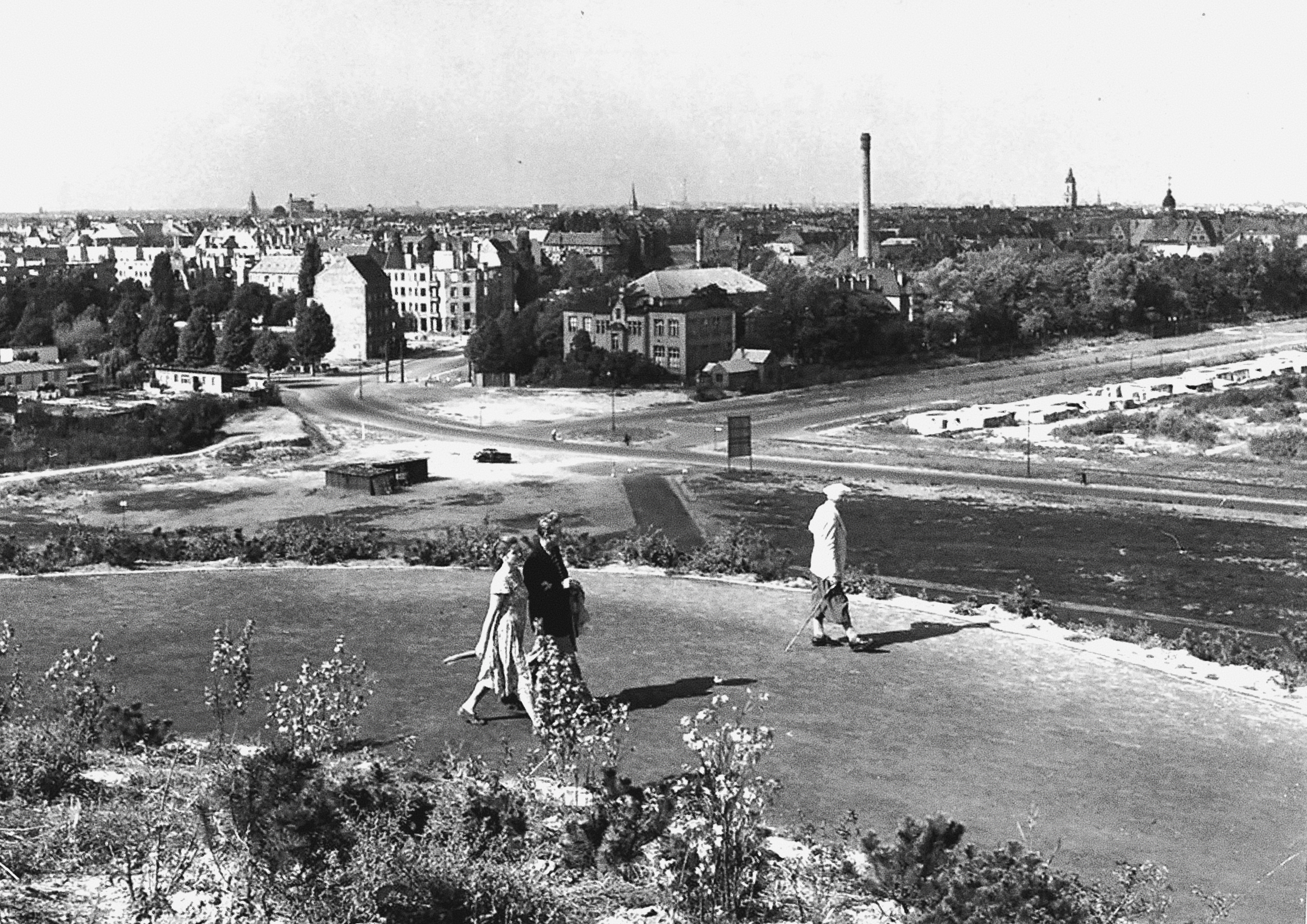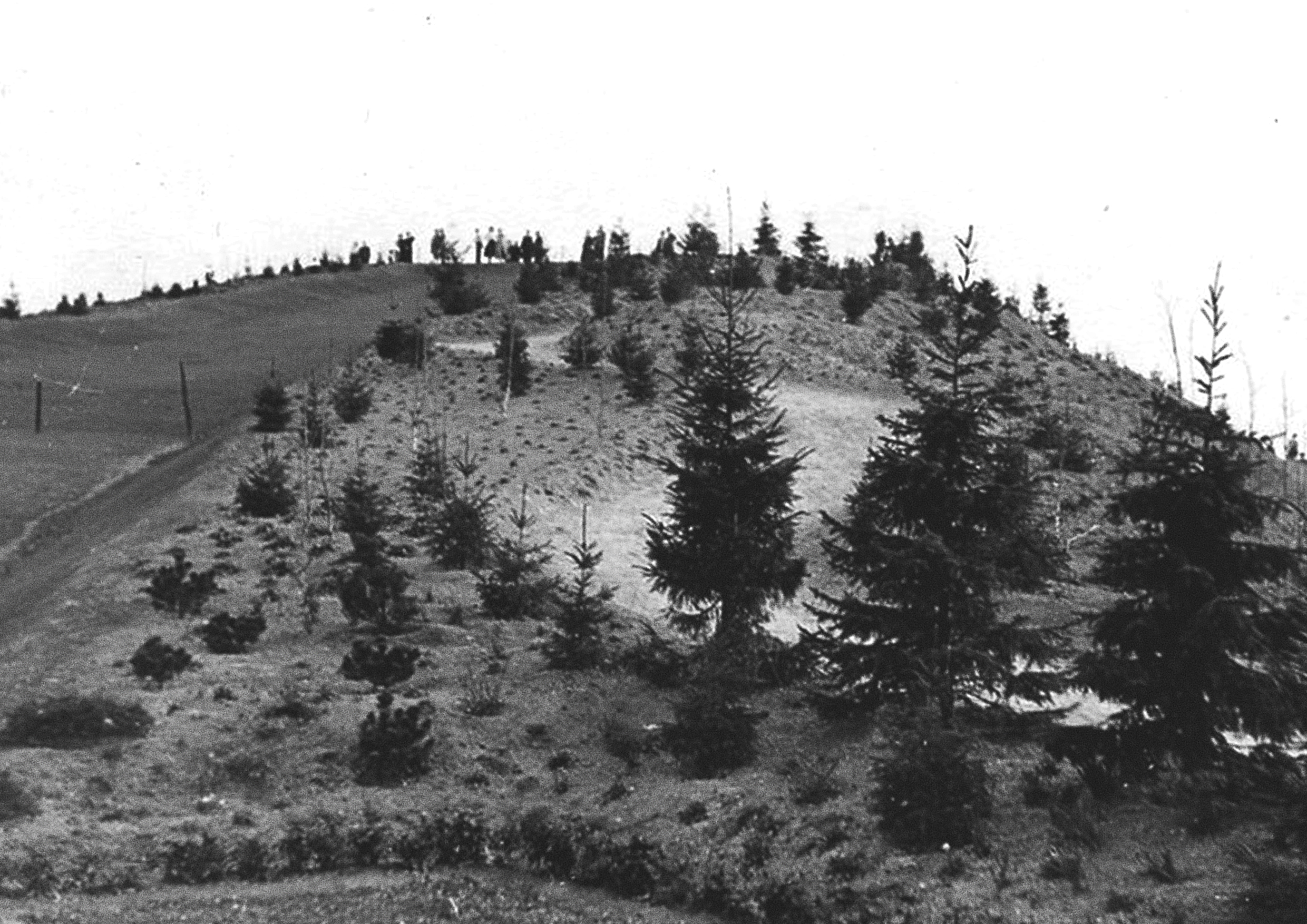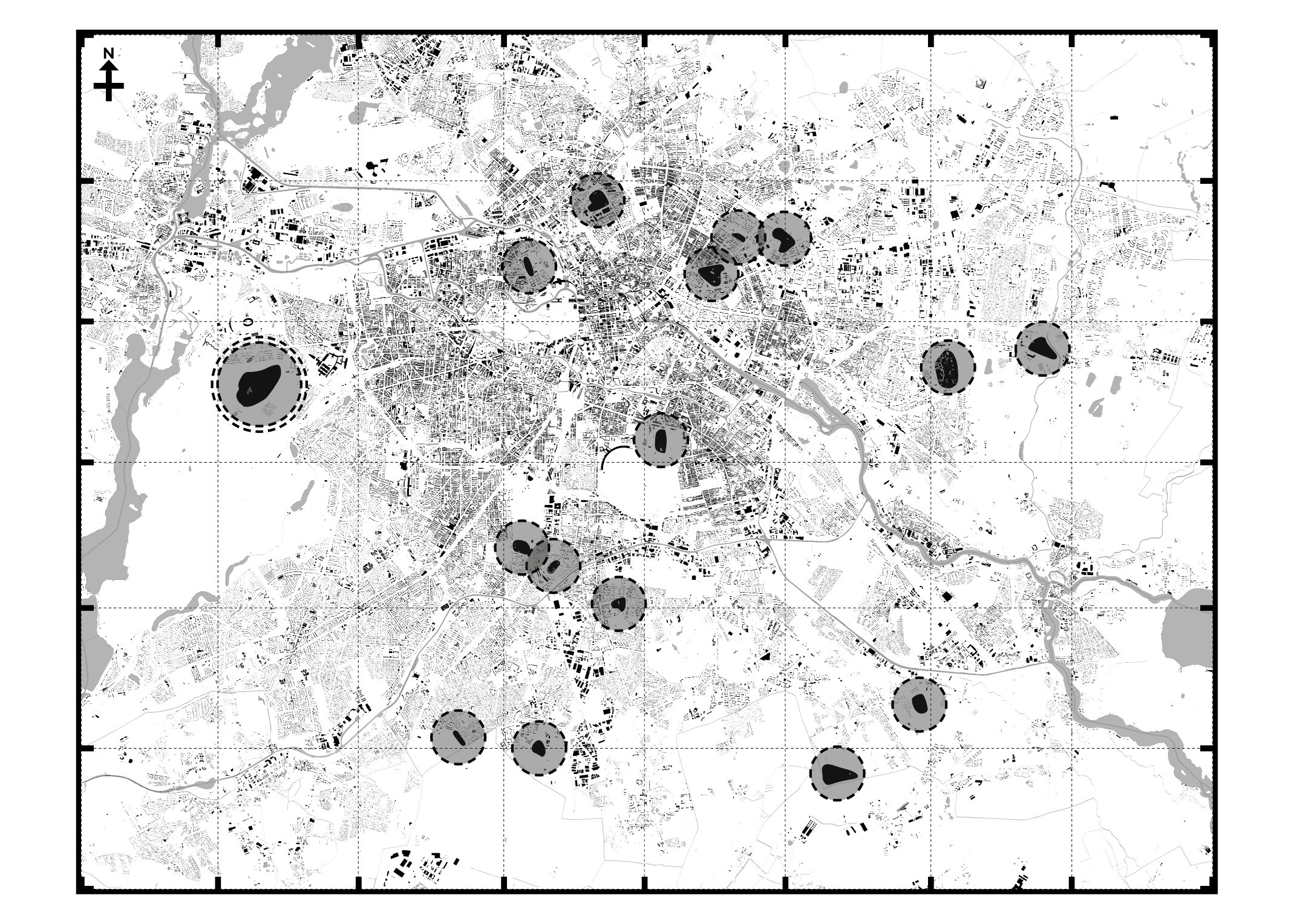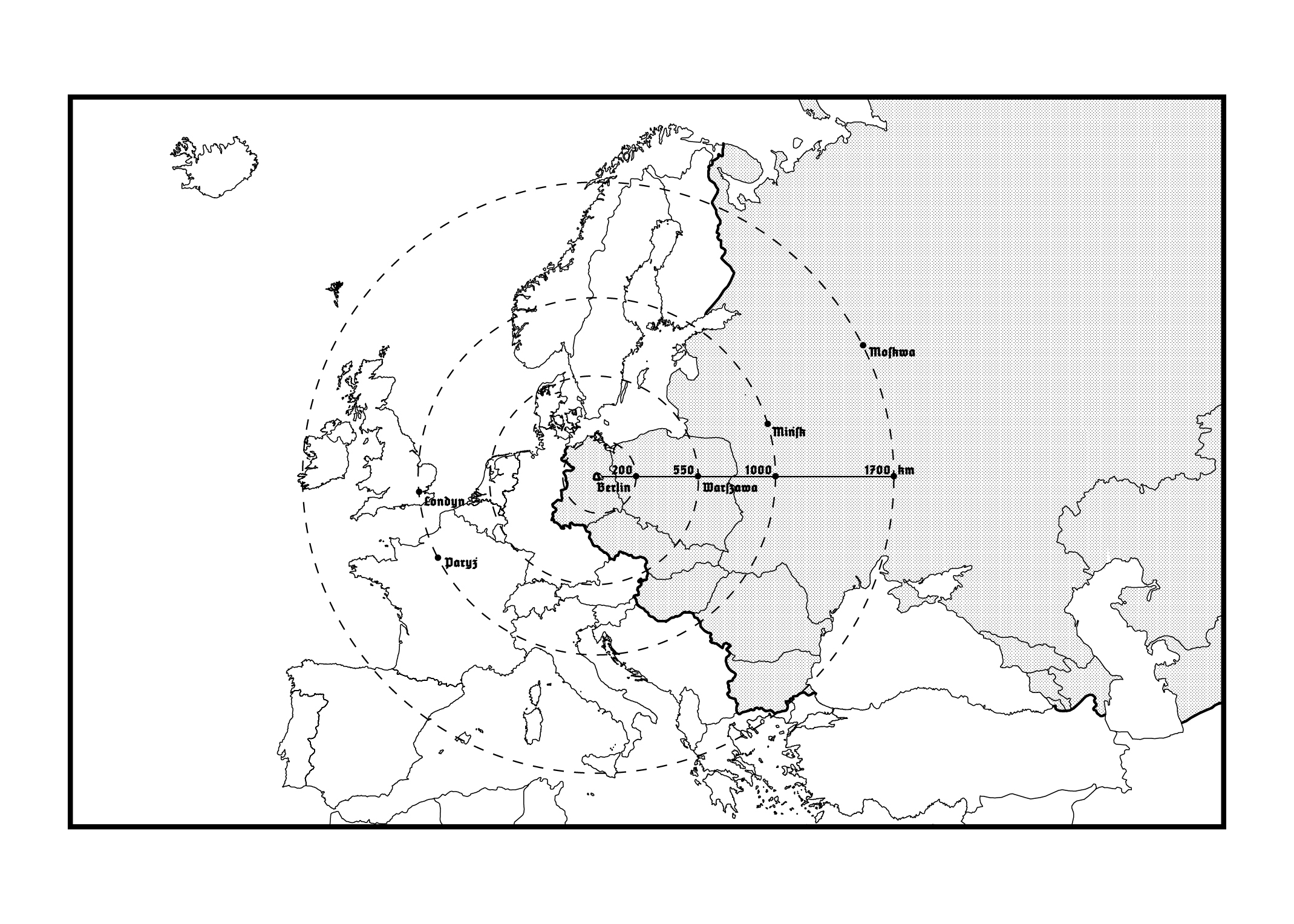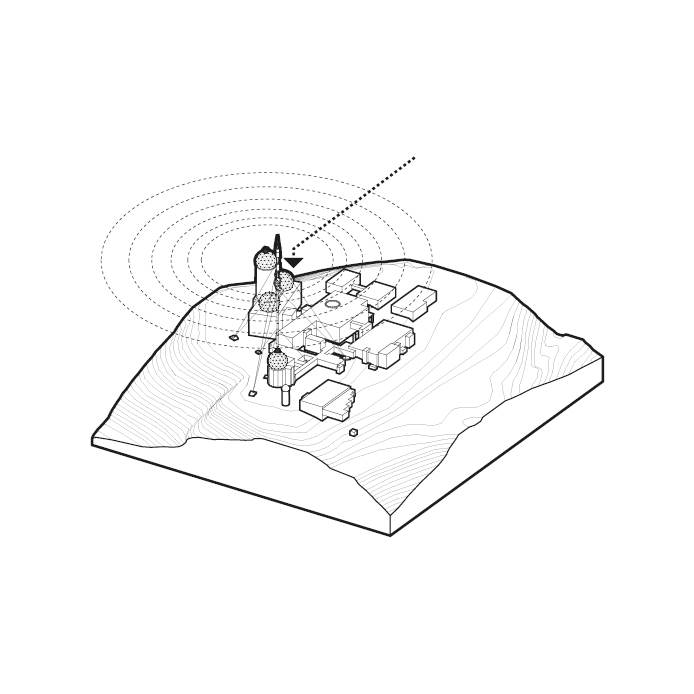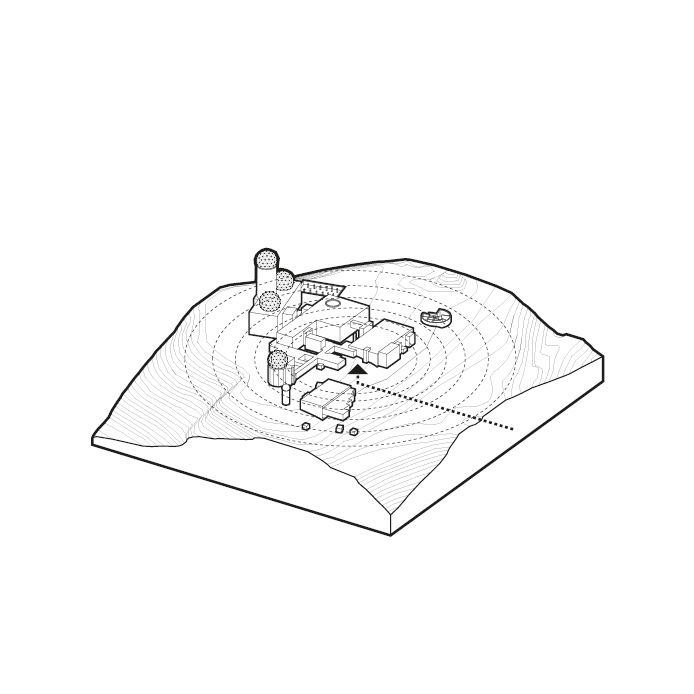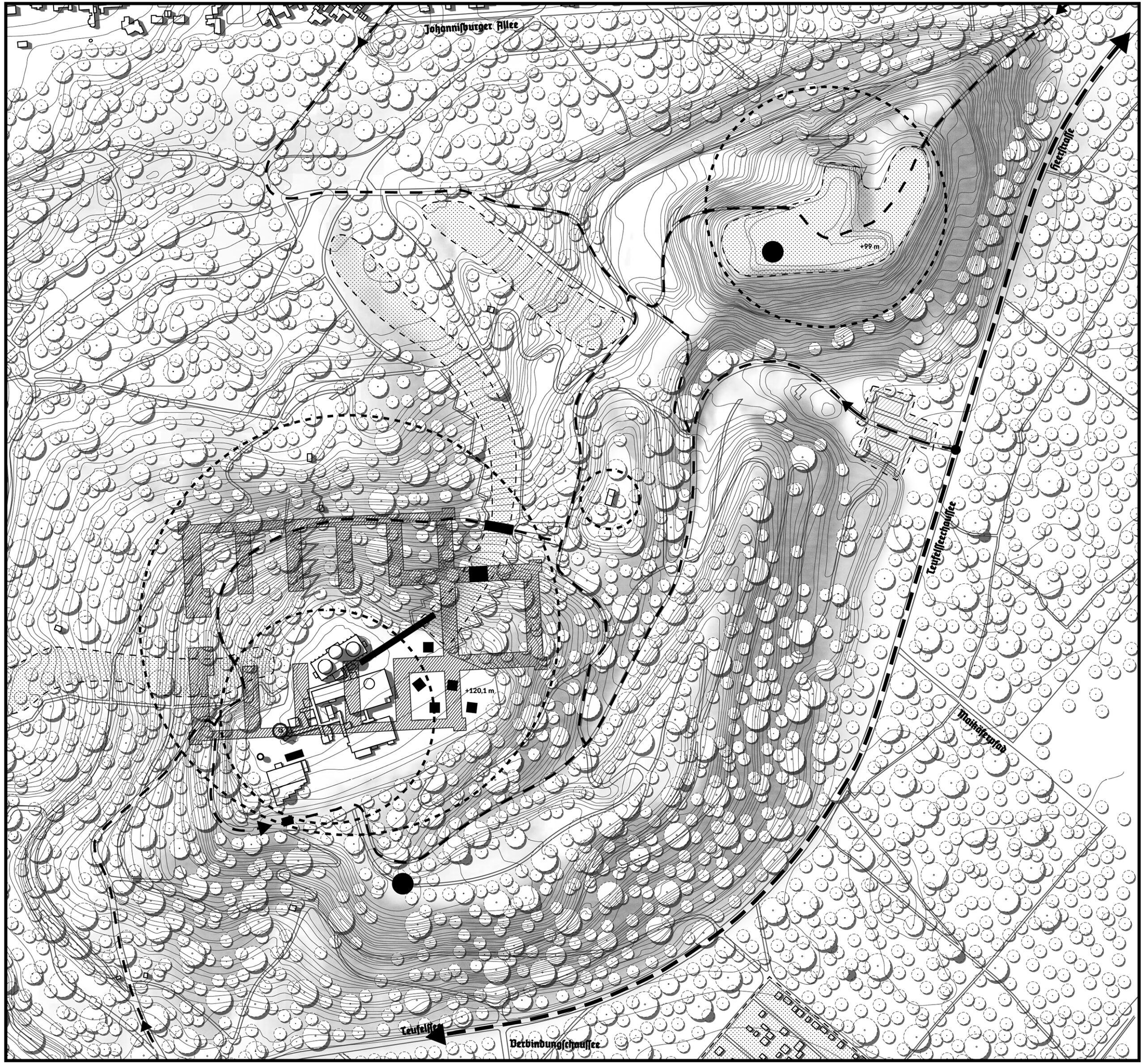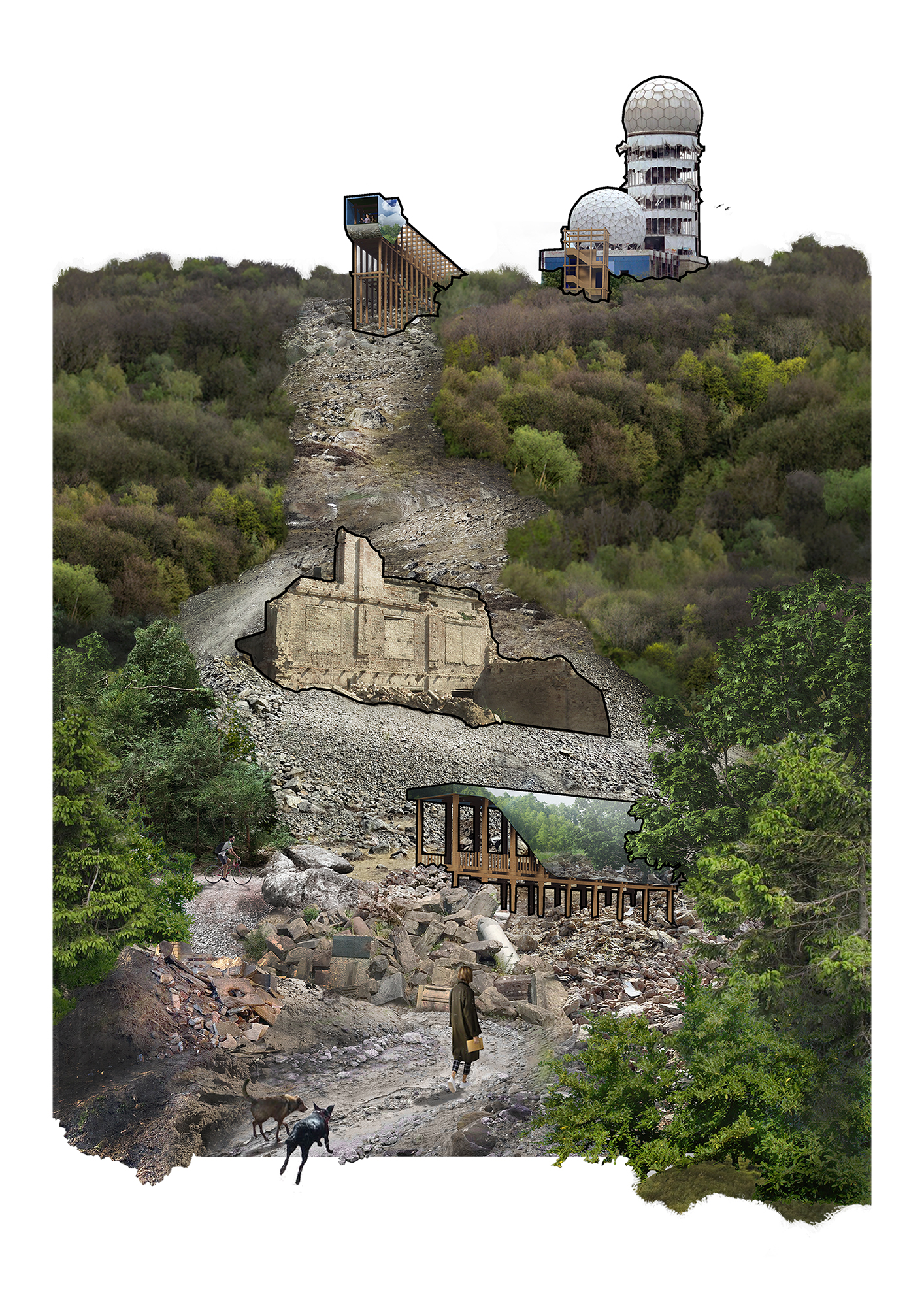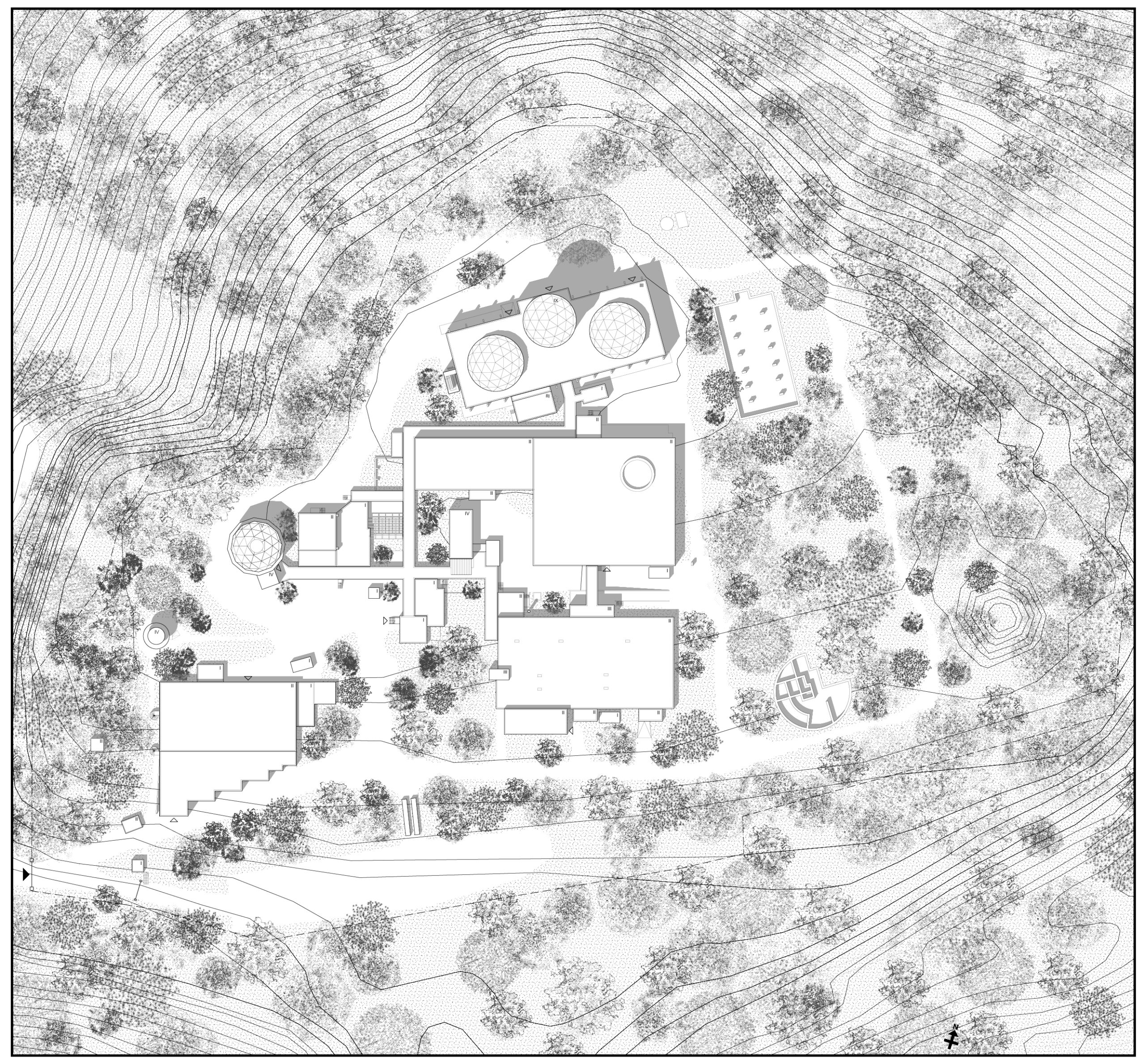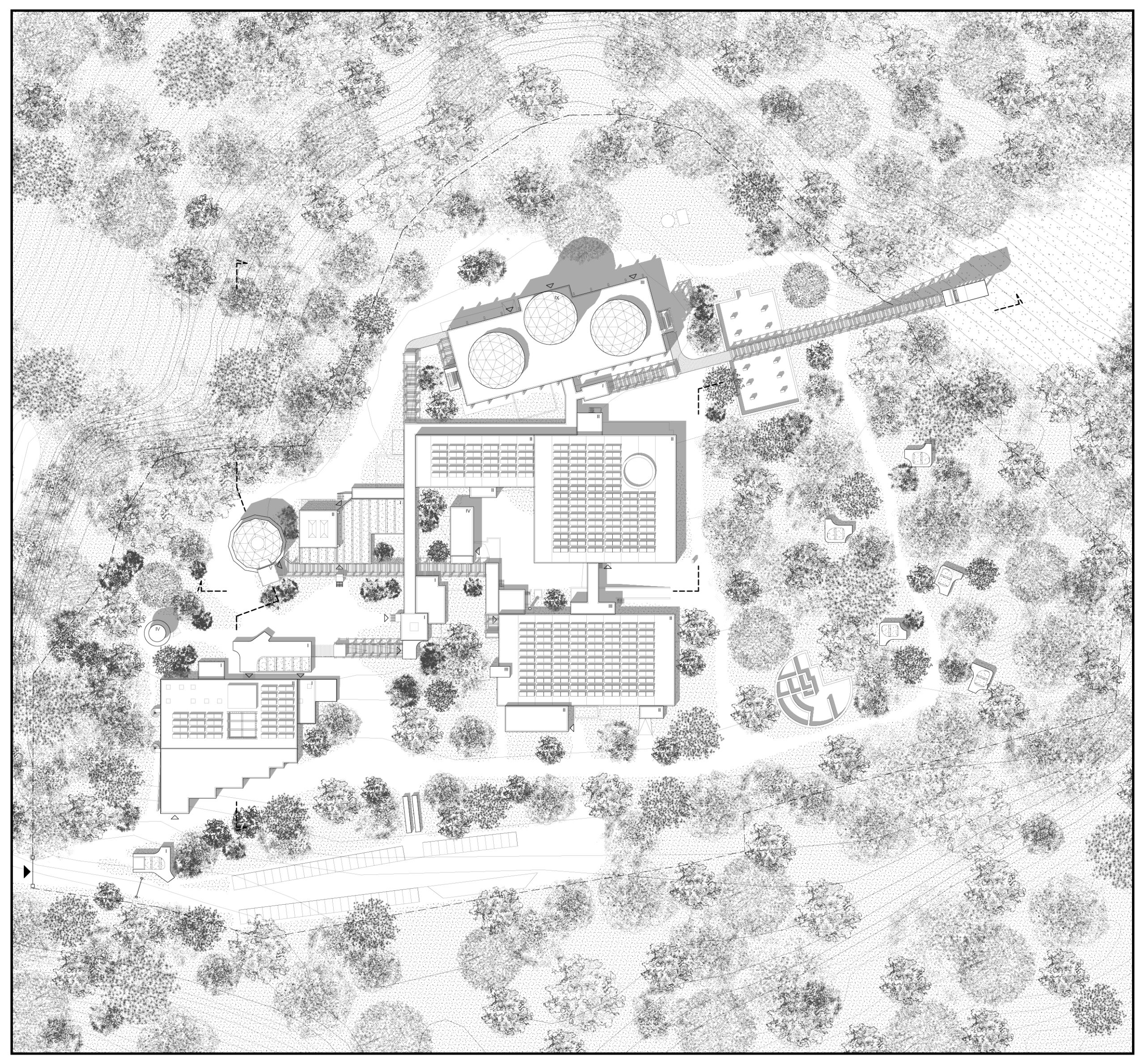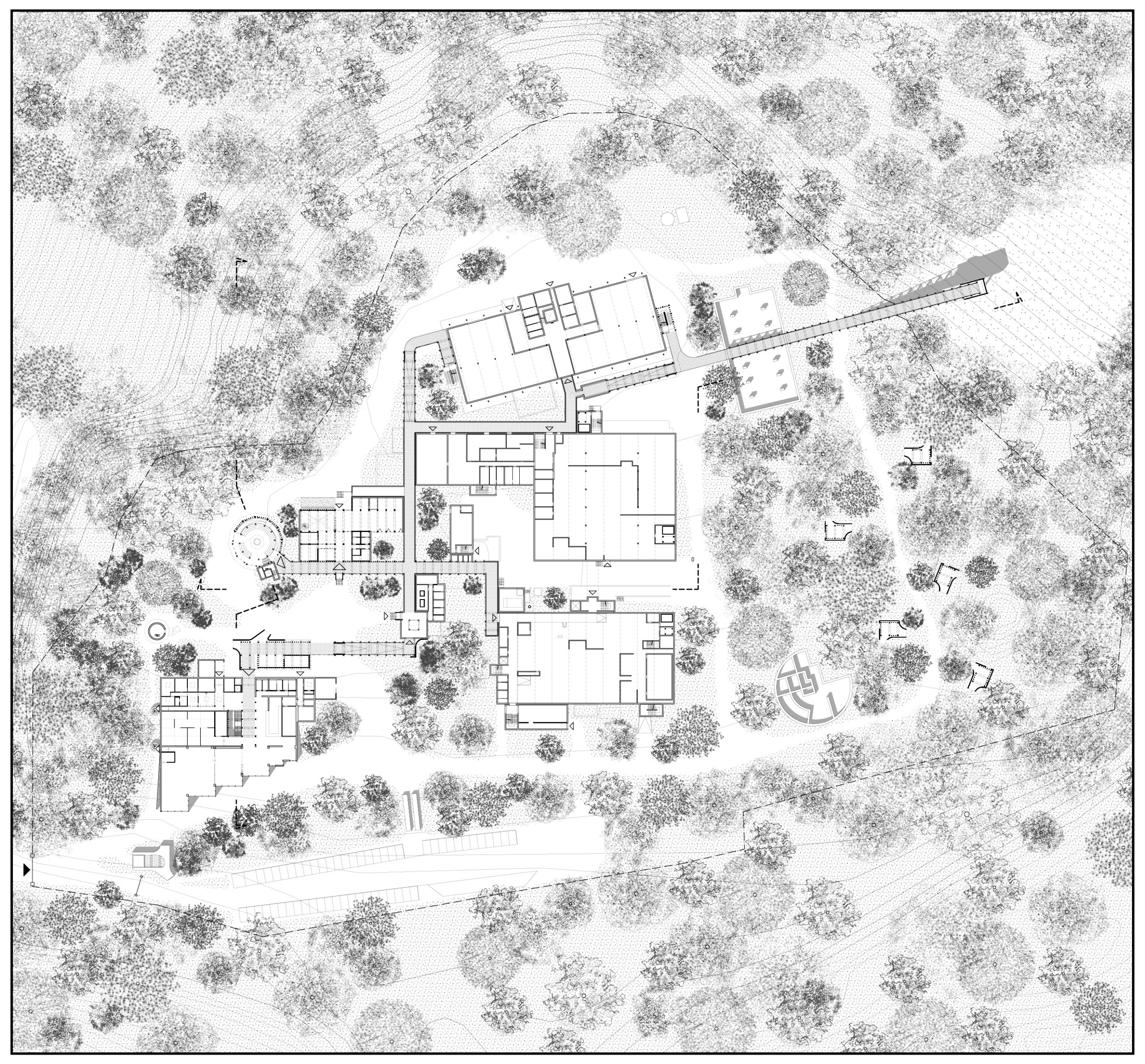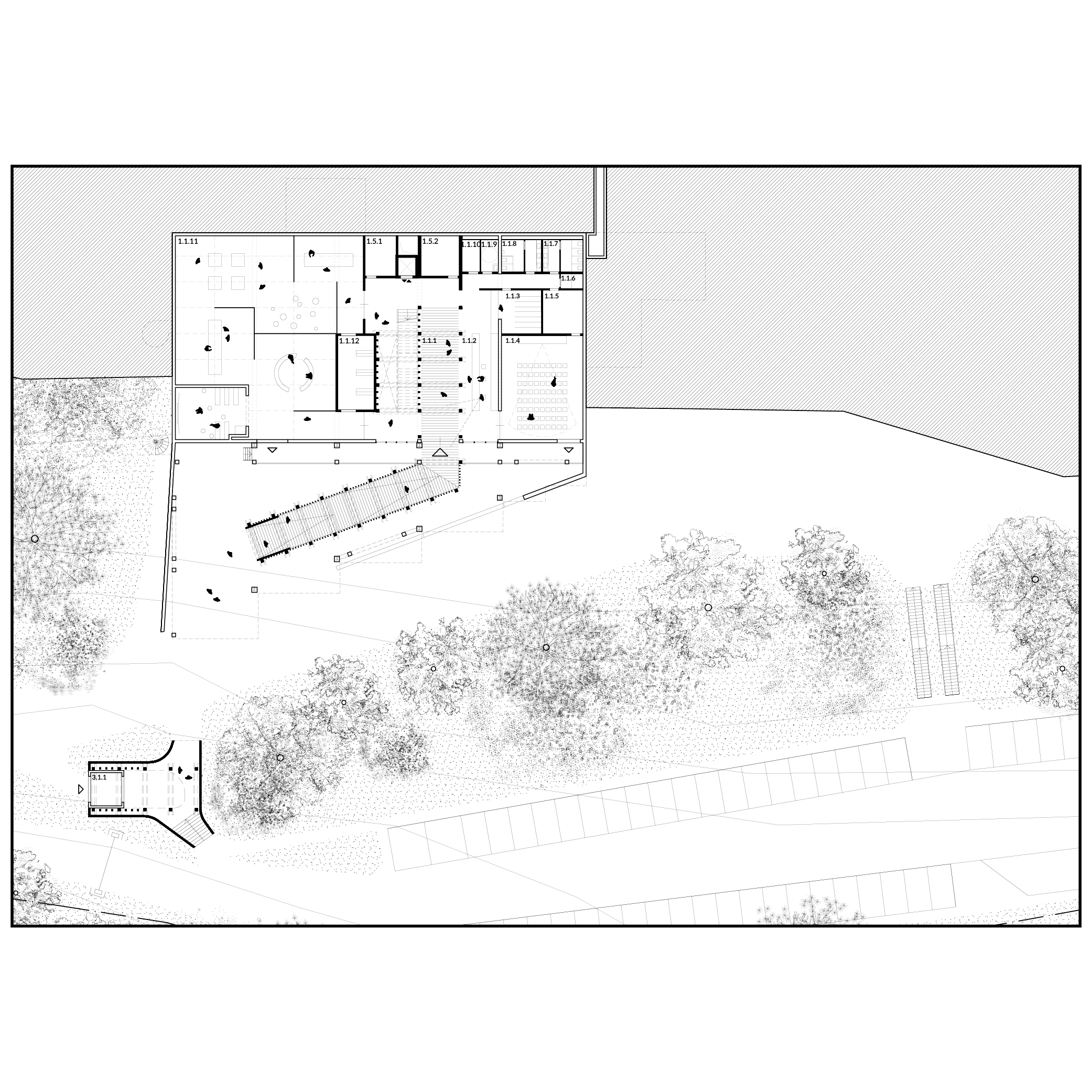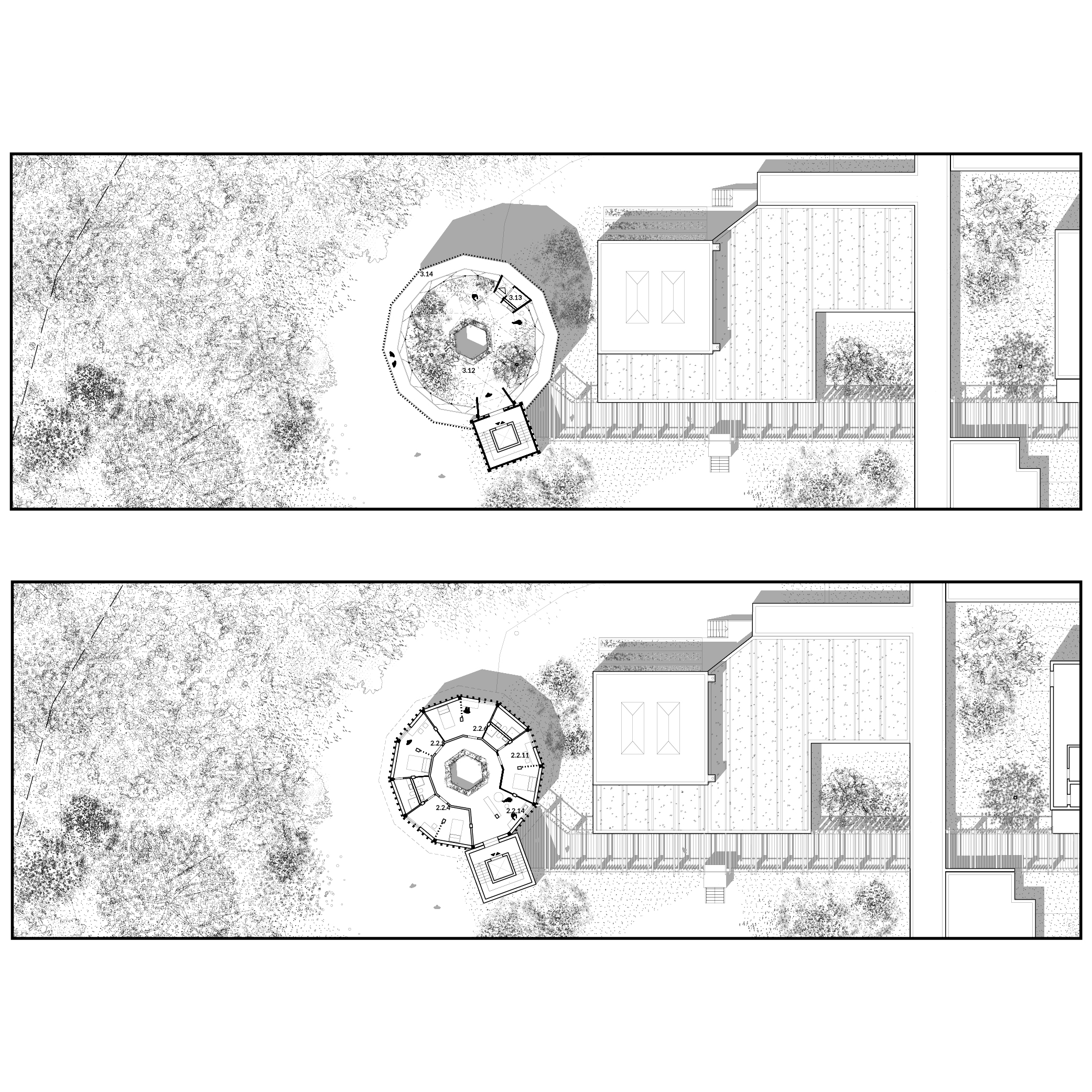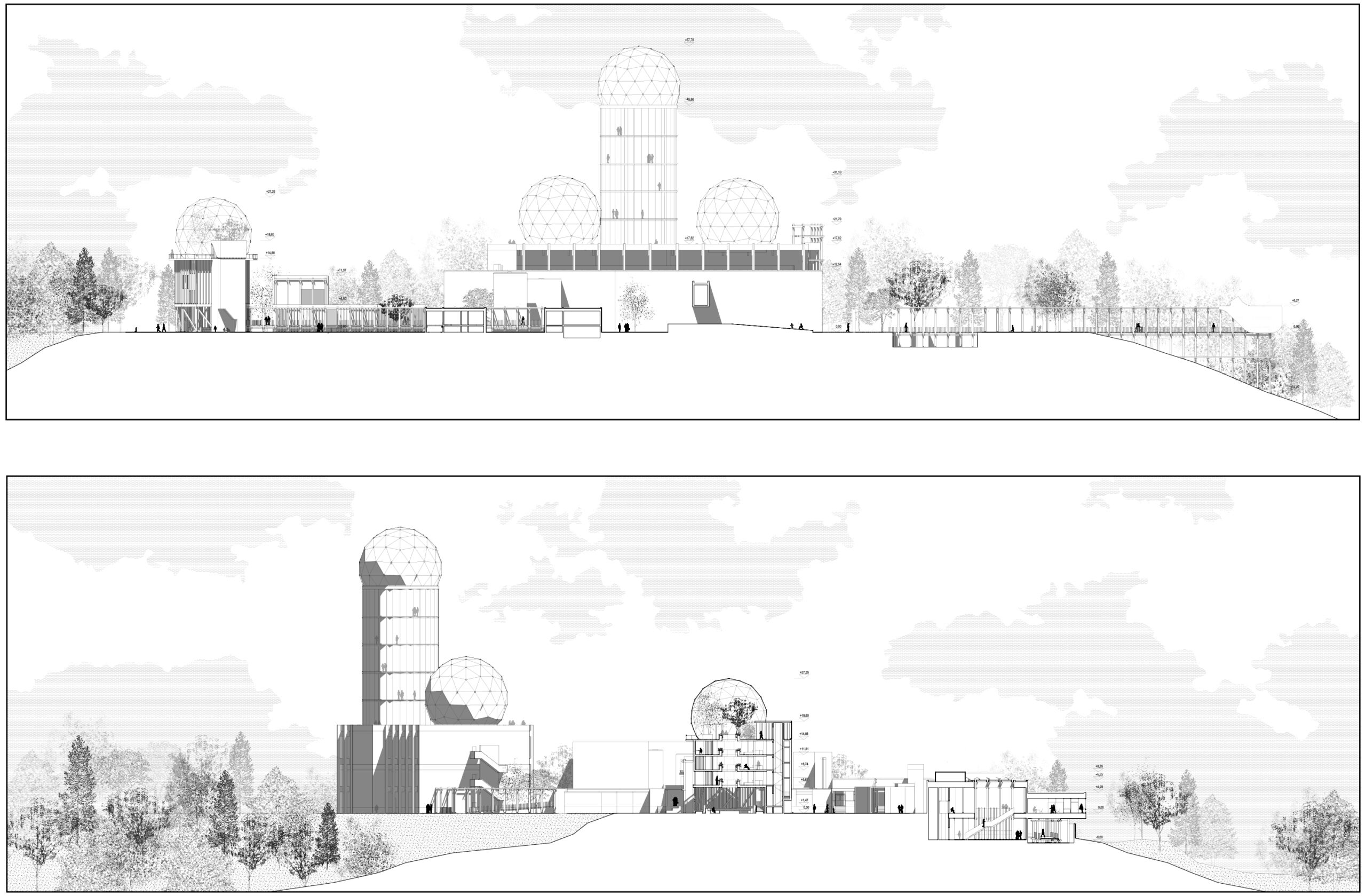In Wim Wenders’ film, ”Der Himmel über Berlin”, there is a scene that is very memorable to me. The angel Cassiel accompanies an elderly poet who searches unsuccessfully for Potsdamer Platz, traversing a vast, desolate plot of land surrounded by a high wall covered in graffiti. The only element filling the frame is a meandering footbridge raised above the area, with dark figures wandering about. The poet Homer, crushed by the vastness of the emptiness and by his memories, sinks into an old armchair abandoned in the high grass and, looking at something that is no longer there, says:
Failing fictions
Revitalization of the Teufelsberg hill with the NSA Field Station in Berlin
About the project
The subject of the thesis is a revitalization project of Teufelsberg hill with the NSA Field Station in Berlin. The Devil's Mountain has been built up from the layers of history and fallen fictions of the last century with pagan beliefs and the Nazi idea of building the capital of the world at its foundation. Second metaphorical layer that consists of the mountain is a therapy of a post-war trauma based on creating a burial place of the resulting rubble, the last one includes numerous failed projects of adapting the station. The complex currently remains abandoned but is full of artistic potential and thriving nature.
The project is a proposal of yet another fantasy – reconciling the interests of the four main social groups interested in the hill and the station: the owners, the inhabitants, the artists, and the visitors, as well as returning the buried city to the collective consciousness and history of Berlin.
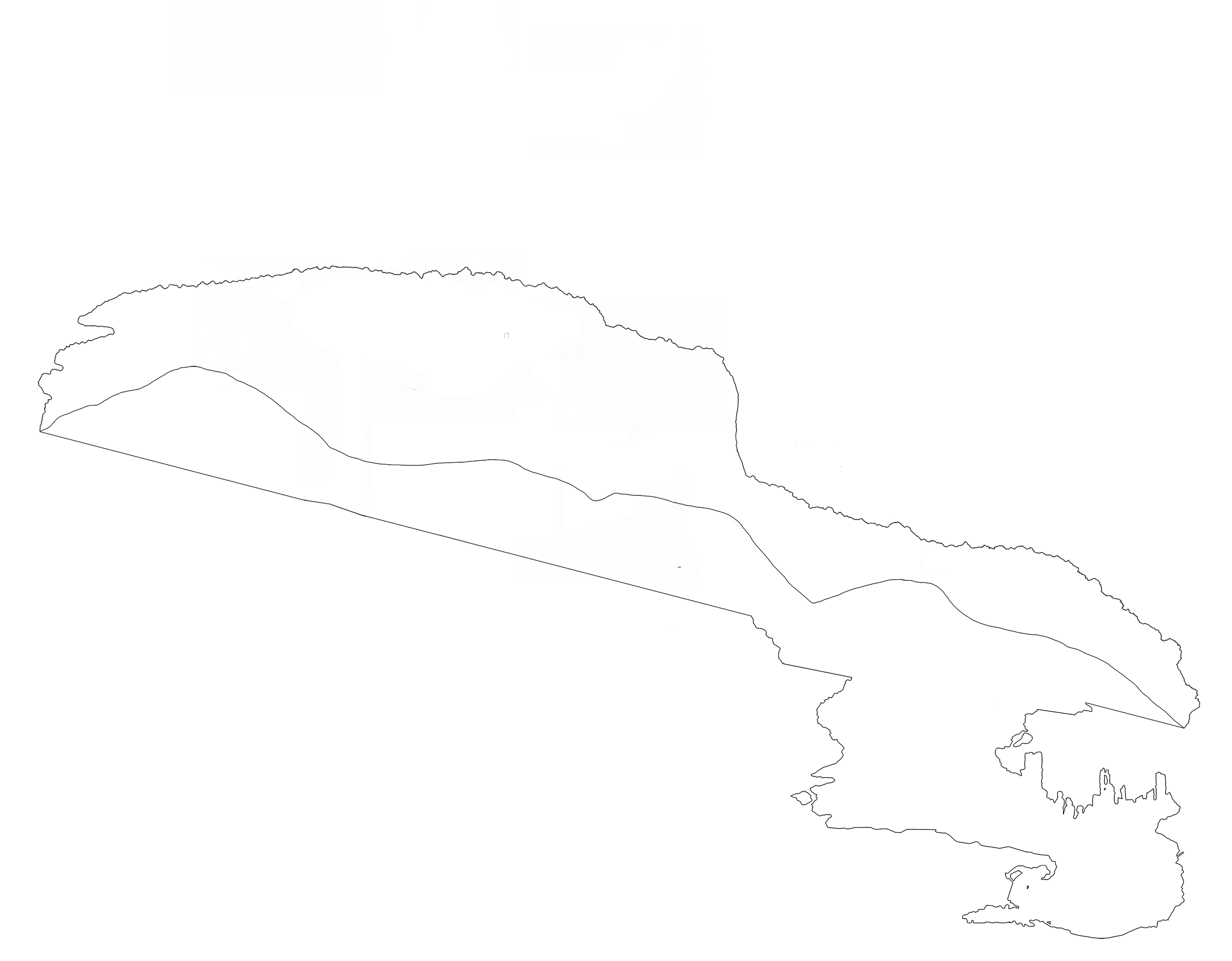
Topic

Although Homer’s reflections are very personal, I was moved by the “disappearance” of Potsdamer Platz, the busy, glittering centre of pre-war Berlin. Four decades back, in the summer of 1948, when Edmund, the young man from “Germania Anno Zero crosses Voßstrasse to sell faded relics to American soldiers visiting the ruined Reich Chancellery building, the area around Potsdamer Platz, though still recognisable, is filled with rubble. Both the film about the Berlin rubble and the one focusing on the abandoned spaces, despite the time dividing them, are shot in black and white, icy tones enhancing the dramatic state of limbo in which the German capital lived for a long time due to the post-war trauma and mourning after the loss of the city. And although there is no trace of this harsh and tragic reflection of the post-war years in the city today, Homer’s question still remains intriguing – where is the largest and busiest square in pre-war Europe, the eclectic Potsdamer Platz with its building of the famous Wertheim shop? What happened to the ruins and rubble of Berlin in the forty years that separated the two films? These questions were the prelude to the subject of my thesis.
Trümmerberge
Berlin’s numerous hills could very easily be mistaken for geological creations dating back millions of years or the remains of moraines deposited by a retreating ice sheet. However, they are only half a century old. Beneath their green cover lies an uncomplicated geological stratigraphy, but the dark product of a total war – the ruins of a city. Between the green peaks and the earlier, original surface lies the 75 million m3 of ruins that piled up in Berlin after the war. Berlin’s history is reflected in the city’s geography today – Trümmerbergen, the rubble dumps, have given it a new face.
Walking along the paths of Volkspark Friedrichshain, located in Prenzlauer Berg, one suddenly notices a massive concrete structure rising from a densely overgrown hillock. This is a fragment of a bunker, built in 1941 and so strong that it was impossible to blow it up after the war. That is why it was “buried” under 2.5 million m3 of rubble from destroyed tenement houses and hidden under a blanket of park greenery.
The biggest and most secret rubble hill is Teufelsberg, towering above the Grunewald forest. Teufelsberg (literal translation, “Devil’s Hill”), was formed from the remains of a large part of pre-war Berlin. Out of the 16,000 burnt
16,000 burnt and destroyed buildings, which had been reduced to 26 million cubic metres of rubble by the bombing of Operation Berlin. Beneath the deceptively idyllic hilltop, where modern Berliners picnic in summer and sled in winter, lies a dead city – a kind of architectural mass grave.
Teufelsberg
The revitalization project of the hill aims to re-establish the relationship between the buried city and the people who inhabit this reborn place; to connect the Teufelsberg with contemporary Berlin, to fill the gap in the city’s history. The design interventions serve to authenticate the history, to complement the existing fabric with the necessary objects to make the site more accessible and to enrich the visiting experience.
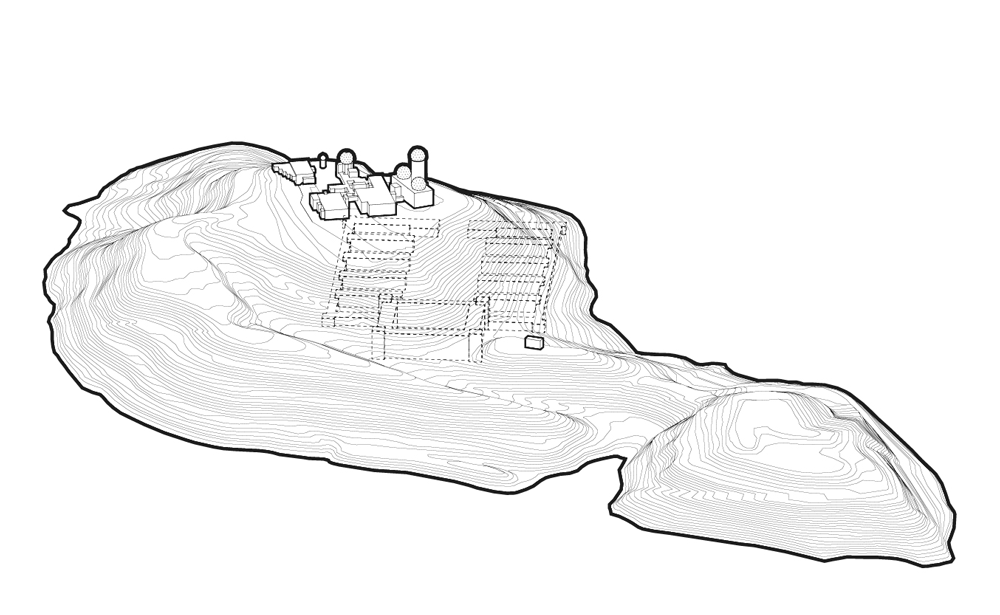
NSA Field Station
By seeking to partially complement the existing space rather than completely fill it, the project will provide the impetus to develop the station in such a way that it does not lose its values, moods and uniqueness. This initial platform, with its basic functions – museum, media centre, restaurant, artists’ house, tourist facilities – will develop over time and the NSA Field Station facilities will be developed according to current need.
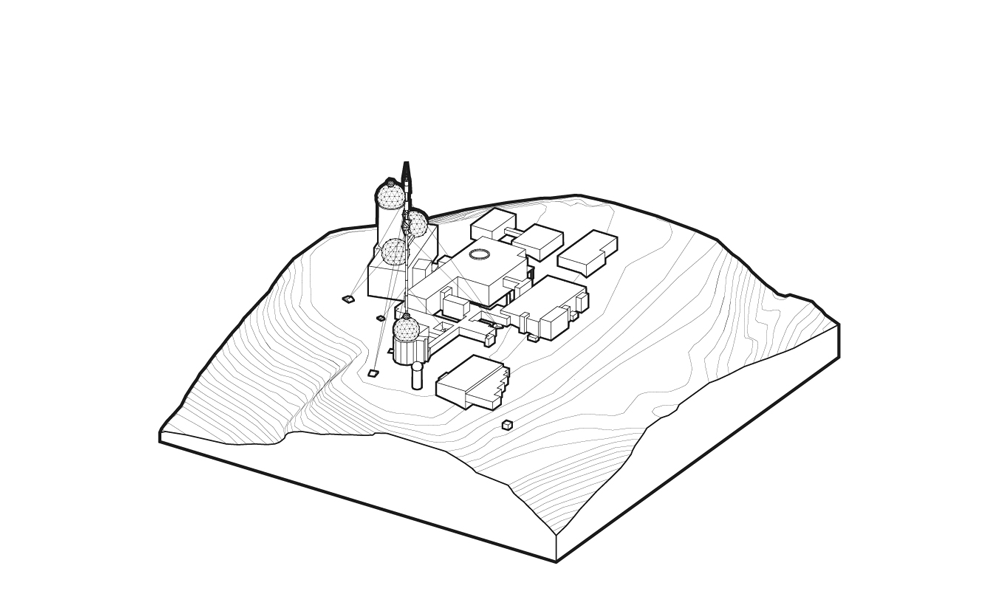
info
Master Thesis at Cracow University of Technology, Faculty of Architecture
Institute of Architectural History and Monuments Conservation
Supervisor: Marta Anna Urbańska, PhD Arch
Reviewer: Jolanta Sroczyńska, PhD Arch
Specialist consultations: Urszula Nowacka-Rejzner, PhD Arch
2020
